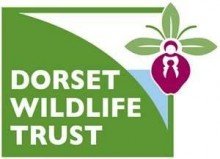Rare native elm trees on Brownsea Island are being protected under a new monitoring scheme in an effort to save them from Dutch Elm Disease. The smooth leaved elms Ulmus minor, survivors of the epidemic in the 1970s, are still at risk from the disease, prompting joint action by conservationists from Dorset Wildlife Trust and the National Trust.

The eighty trees, believed to be the only such group of semi-mature elms in Dorset, were discovered by Abigail Gibbs, Dorset Wildlife Trust’s Brownsea Island Warden, in 2004 following rhododendron clearance. Now Abigail, a tree expert who worked on controlling the disease in Sussex, has set up a joint group of volunteers and staff from Dorset Wildlife Trust and the National Trust to protect the remaining elms. The team has been trained to spot the signs of the disease, which claimed two trees on the island in 2009.
Abigail said: “The presence of these elm trees on the island is a complete mystery, but it is wonderful to see established elms such as there used to be all over the country. Now itis vital that we maintain a close eye on them as an attack on one tree could easily spread and begin to destroy the collection. With careful pruning we may be able to save the tree itself and all of those around it.”

Reuben Hawkwood, National Trust Head Ranger on Brownsea Island, said: “We are very lucky that these elms were spotted in 2004 as it has given us the opportunity to put measures in place to monitor and protect them. With the expertise Abby gained working in Sussex, and the diligence of the combined team of NT and DWT volunteers and staff, we will hopefully be able to preserve this rare stand of elms on the island.”
Dutch Elm Disease wiped out nearly all the mature elms in the country in the 1970s. The disease takes the form of a fungus which spreads up the tree through the bark, affecting the water system right up into the leaf canopy. The disease is spread through the trees’ roots or by the elm bark beetle, which bores into the bark to lay eggs, picking up spores from the fungus which are then spread to other trees.

The elms can be seen from Middle Street, on the south side as you approach The Vinery, and also from the ‘woodland walk’. Please stay on the paths to avoid compressing them.
Brownsea Island is open daily until 4thNovember. For more information contact Abigail Gibbs on 01202 709445.oodland floor around them.







